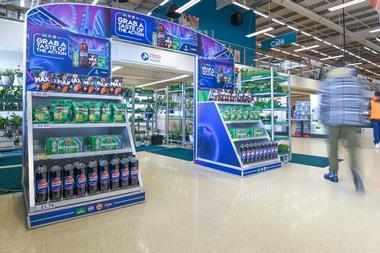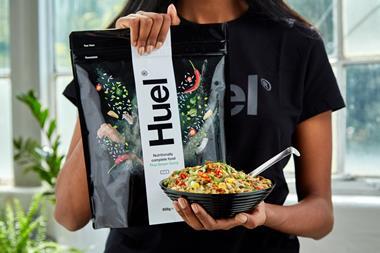Hands up. Who likes the sound of others chewing? Anyone? Well, loved or loathed, eating sounds have become the new feature of fmcg advertising.
The sound of a sizzle, the hissing of a beer bottle or the purr of a pour have all been, for decades, staples of food and drink marketing. Even the crunch of Crunchy Nut. Or the crack of a Magnum ice cream being bitten into. It was ASMR before we knew the term.
But the rise of ASMR on social media has sent the trend into overdrive. Whispering to your audience, rapping your nails across a new product, and, yes, masticating into a microphone would have been very strange behaviours a few years ago.
A wider than ever range of audio-only content has even led to podcasts where the hosts and guests are happy to chat over brunch, with the associated cacophony of cutlery, chowing down and the occasional choking as something goes down the wrong way. Waitrose’s Dish podcast is a prime example.
Normalising these noises has emboldened ad execs to confront us more frequently with such sounds, whether we like it or not, across advertising on podcasts, YouTube and social networks.
Misophonia
One particularly egregious offender is gum-maker Extra, whose latest #ChewGood advert gives podcast listeners just seconds to turn down the car radio or rip off their headphones before the sounds of chomping begin.
The £2.1m ‘Chew Good’ marketing campaign by Omnicom and Energy BBDO features a series of creatives showing people quieting their inner monologue by stuffing a piece of gum into a mouth on their forehead.
It’s a subversion of traditional ASMR, says associate creator at SocialChain, Beth Blance.
“While it’s still a relatively new tactic, subverted ASMR certainly delivers a level of fame or infamy,” she says.
“But brands would be well advised to consider what value this kind of tactic delivers once the novelty wears off. Ultimately, it’s a cost benefit analysis - the customer remembers your ad, but if they remember it with a shiver of disgust, was it worth it?”
One Reddit user suggested such ads hadn’t worked on them, vowing that the only money they would be spending as a result would be a subscription to the ad-free tier of their favourite podcast.
That eating noises are divisive in advertising should not come as a surprise to brands. For a start, many consumers have been raised to consider eating loudly as revolting and ill-mannered.
Earlier this year, Pot Noodle’s viral slurping ad was decried by self-described misophonia sufferers. Misophonia is, according to the NHS, “an extreme emotional reaction to certain everyday sounds that most people would find relatively easy to ignore”. It further describes the three most common sounds that cause distress: eating, nose and throat noises.
The furore resulted in Pot Noodle’s creative agency Adam & Eve DDB being hounded into creating new versions of the ad, censoring the slurping sounds with noises such as a baby giggling or beatboxing.
So why do brands persist?
“The original edit of the ad is the highest-scoring ad for short-term effects that System 1 has ever tested,” says Mark Shanley, creative director at Adam & Eve DDB.
“It literally split their room in half, in 20 seconds. Half feeling intensely happy or surprised, the other half feeling utter disgust. Which ultimately led to a 25% sales uplift in the first four weeks. So the campaign’s effectiveness was proven at the supermarket till.”
Ads imitating art
It’s not the only example of success, particularly among Gen Z. “We sent our Knorr Snack Pots to gaming influencers and live streamed their slurps and stirs on Twitch, simultaneously pushing viewers to purchase,” Nicky Bullard, CCO of MullenLowe, tells The Grocer. All in all, it too resulted in a 26% spike in sales as “gamers felt the brand, heard the brand” and proceeded to checkout.
Rebekah Guilar, account director and new business lead at creative consultancy We Are Pi, cites the 2022 film Triangle of Sadness and its eating scenes as a masterclass in how to disgust an audience through sound.
“I had never seen an audience engage with content so viscerally, and it really stuck with me how the director had leveraged the power of sound to draw them into the content, even to repulse them,” she says.
Translating that into advertising, “the benefit for a brand is that they can trick the listeners’ brain into thinking they’re actually experiencing the product”.
And, of course, such ads have got us talking.

























No comments yet